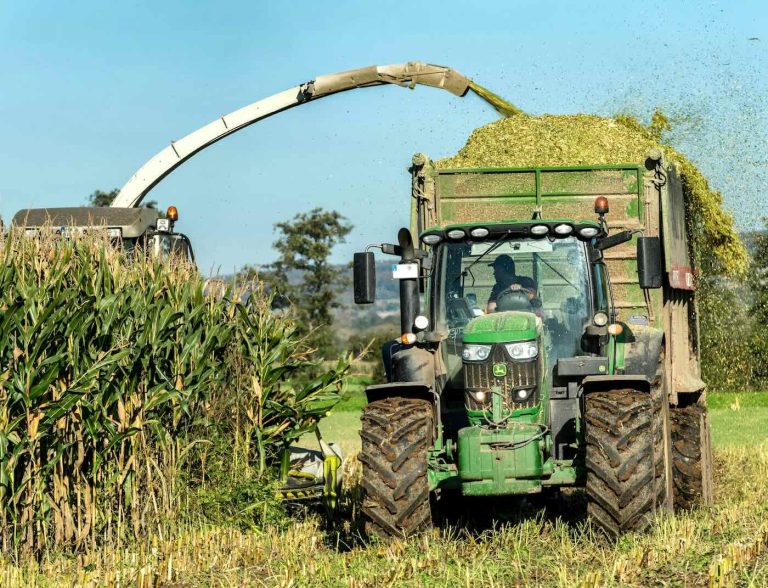
The world now feeds 8 billion people, ten times the population before the Industrial Revolution, and thankfully, crop production is at an all-time high. [emphasis, links added]
The rapid growth in agricultural production is partly due to the increase in atmospheric carbon dioxide (CO2) since 1940.
The world has also experienced significant economic growth and prosperity, Benefit from more than 6,000 products derived from fossil fuels.
These products support the following infrastructure and did not exist centuries ago because they all require components and parts made from fossil fuels that were not available before 1800:
- non-animal powered transportation
- Airport
- Hospital
- electronic product
- telecommunications
- communication system
- army
- space program
Global crop harvests and yields continue to rise. This is contrary to what politicians and the media tell you.
We are growing more food on less land than at any time in history. The number of undernourished people is shrinking. This is all good. Carbon dioxide is the Miracle-Gro in the air.
Today, carbon dioxide concentrations are about 420 ppm, a 50% increase since the onset of the Industrial Revolution. The minimum threshold for plant life is 150 ppm, and Earth approached this catastrophically low level during the last ice advance. When plants die, only microorganisms survive on Earth.
The amount of carbon dioxide in the atmosphere has declined significantly and severely over the past 140 million years. Their concentrations dropped from nearly 4,000 ppm to just over 180 ppm 18,000 years ago.
While our recent increases in concentrations have helped promote vegetation and agricultural growth, carbon dioxide levels are still not ideal for vegetation and crops. Our current carbon dioxide levels are near record lows compared to the Earth's historical average (2,600 ppm).
Questions for your next conversation might be: If politicians support continued reductions in CO2 emissions, what is the backup plan to support crop production to sustain 8 billion people on the planet?
Additionally, greenhouses, submarines, and the International Space Station have carbon dioxide concentrations ranging from 1,000 ppm to 6,500 ppm.
To enhance your ability to have conversations with students, teachers, and friends about the topic of energy literacy, this 40-minute conversation with Greg Wrightstone is a must-watch.
To help with the topic of energy literacy conversations, a simple app for your iPhone is “An inconvenient fact”.
Some uncomfortable facts from the app to stimulate conversation:
- CO2 is plant food; therefore, more CO2 means more plant growth.
- Carbon dioxide emissions have been decreasing for 140 million years.
- Modern warming started long before SUVs or coal-fired power plants.
- Before the emergence of modern civilization, temperatures had been changing for 800,000 years.
- Over 6,000 of the past 10,000 years have been warmer than today.
- We live in one of the coldest periods in Earth's history.
- For 65 million years, the weather has been warmer than it is today.
- More CO2 = less drought.
- The earth is becoming greener, not turning into a desert.
- Extreme heat events are decreasing.
- Cold kills far more people every year than heat.
- The number of hurricanes has been declining for 250 consecutive years.
- Polar bear numbers are increasing.
- Sea level rise began more than 15,000 years ago.
There is still much work to be done, as almost half of the world's people (more than 3 billion people) live on less than $2.50 a day and billions of people have little or no access to electricity. Like those living in places like Africa, Brazil, China, India, Indonesia and Malaysia, and compounded by the disingenuous “green” agenda of the leaders of a handful of wealthy advanced economies, these economies benefit from more than 6,000 Products made from fossil fuels have been around since the beginning of the industrial era.
World leaders have little understanding of reducing crop yields by reducing CO2 emissions, and Eliminating crude oil from the world without considering alternatives would be immoral and evil, as extreme shortages of food and products currently made from fossil fuels would result in billions of people suffering from disease, malnutrition, and weather-related illnesses. Death by death, and perhaps the greatest threat to the world's population of 8 billion.
Providing rich and developing countries with a sustainable supply of food and a wide range of products made from fossil fuels that were unavailable hundreds of years ago, We need to focus on solutions to food and energy poverty.
Food and energy poverty is caused by limited supply chains for increased global crop production and all products made from fossil fuels, which are the basis for everything, such as:
- Electrical appliances
- Heating and ventilation
- water filtration
- health
- medical equipment
- Electricity generation (yes, all “parts” of every generation system, such as wind, solar, coal, natural gas, hydro, and nuclear) are products based on fossil fuels.
Cell phones, iPads, computers, X-ray machines and other devices made using fossil fuel products require reliable, sufficient, uninterrupted and affordable electricity to operate.
Without these products produced from fossil fuels, there wouldn't be anything that requires electricity! As far as we know, Unreliable renewable energy sources, such as wind turbines and solar panels, can only produce electricity occasionally and cannot produce anything for the 8 billion people on the planet.
There is much in common between carbon dioxide levels and the many fossil fuel products that feed the 8 billion people on Earth today.
Hopefully the content of this article will spark a conversation about energy knowledge and debunk global warming myths!
Top photo by Wolfgang Weiser via Pexels
Learn more at the CO2 Alliance
